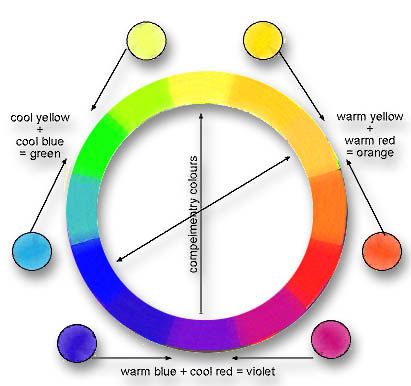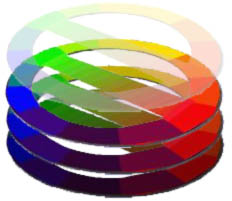Colour Theory (Part 1)
The 12 part colour wheel below is based on the three primary colours ( Red, Yellow and Blue )
placed evenly around a circle. Between the three primaries are the secondary colours (Green, Orange and Violet)
which are mixtures of the two primaries they sit between. The tertiary colours fall between each
primary and secondary colour. Between yellow and orange, for example, is yellow orange, between blue and
violet is blue violet and so on.
All these colours around the outside of the colour wheel are called
saturated colours. They contain no black, no white and none of their complementary
or opposite colour. NB. Some books will refer to tertiary colours as a mixture of the three primaries and only
break the colour wheel into six colours (primaries and secondaries). We prefer the theory based
on Johannes Itten's 12 part colour wheel, as it offers a much better understanding of the interaction of colours.
Compound colours are colours containing a mixture of the three primaries. All the
browns, khakis and earth colours are compound colours.

In the illustration below the compound mixtures
between red and green are shown, as are tints and shades
of the colour wheel. Tints are made by adding white to a colour, shades are
made by adding black

Imagine a colour wheel filled in with all the
compound mixtures between all the complementary colours. If this colour wheel
is placed in the middle of a cylinder with progressively darker shades of all
those colours below and progressively lighter tints above, the cylinder would
contain every possible colour!
Courtesy of John Lovett� www.johnlovett.com�� Online art lessons and
instruction
Colour Theory Part 1 |
Colour Theory Part 2
|